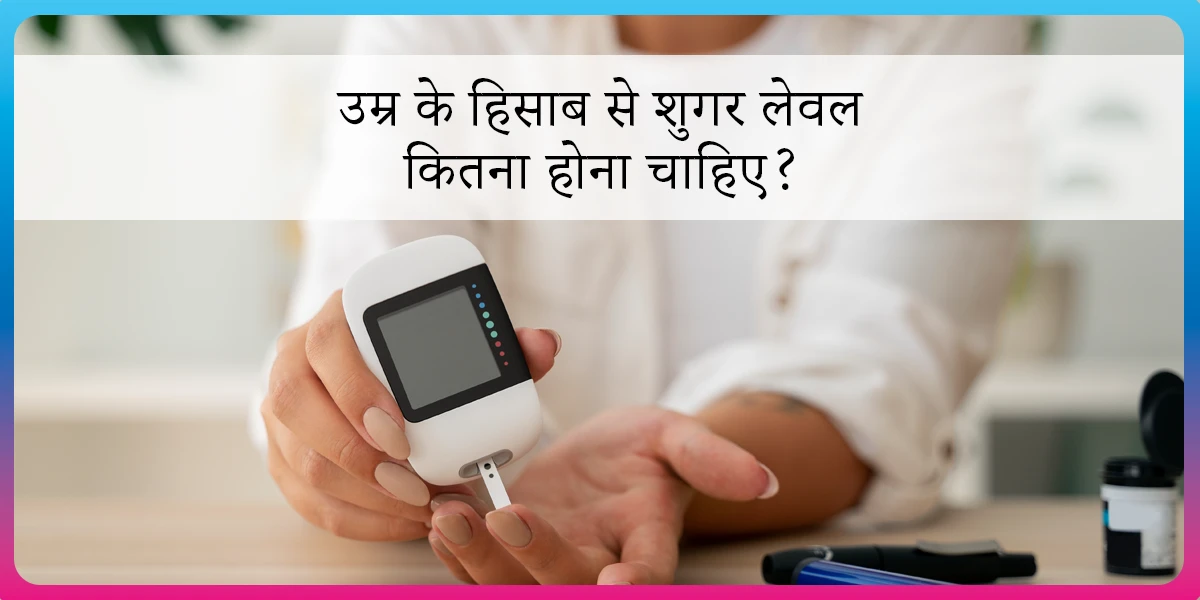Diabetes cure: All you need to know about treating diabetes successfully

Being diagnosed with diabetes can be difficult, and one of the first questions that come to mind is “can diabetes be cured?” or even “is there a natural cure for diabetes?”. While it’s normal to wonder about a possible cure for diabetes, it is equally important to understand the disease, its possible ramifications and how you can reverse it.
Can diabetes be cured?
The short answer would be no. But, there are studies that have shown that it is possible to reverse it with diet and weight loss – a healthy lifestyle. If you’re able to reach and maintain your normal blood sugar levels without medication, you could be said to be in remission. Remission does not mean you’re completely cured since type 2 diabetes is an ongoing disease. And even if you’re in remission (which is when you’re not taking any medication to control your blood sugar levels), there’s always a chance that the symptoms of diabetes will return. So the question remains, how do you reverse diabetes?
As per studies, weight loss has been found to work in helping one manage diabetes better. In fact, studies have found that losing enough weight can actually help you live diabetes-free (in certain cases)
While diabetes cannot be cured, it can be managed with the right treatment. So, here’s everything you need to know about the type of diabetes you have and the type of treatment you can expect.
Type 1 diabetes
This type of diabetes is caused when your immune system destroys the insulin-making cells in your pancreas (called beta cells). Usually, type 1 diabetes is diagnosed in children and young people; type 1 diabetes is also called juvenile diabetes.
When your beta cells are damaged, glucose doesn’t get transported into your cells since there’s no insulin present. Instead, this insulin builds up in your blood, and your cells starve—leading to high blood sugar.
While there’s no way to prevent type 1 diabetes, and doctors don’t know exactly why it is caused – research suggests that genes play a role. It has also been found that certain viral infections can cause your pancreas to malfunction and therefore cause type 1 diabetes.
Treatment of type 1 diabetes
While diabetes, especially Type 1 diabetes, is not curable, it can be managed with the right treatment. When living with Type 1 diabetes, you’ll need to keep a close check on your blood sugar levels and adjust your insulin intake, food, and activities as necessary. Since those with type 1 diabetes need to take insulin every day, they can be prescribed one of several types of insulin, including Rapid-acting, regular or short-acting, intermediate-acting and long-acting insulin.
Lifestyle Changes
One of the mainstays of making a lifestyle change when living with type 1 diabetes is to eat healthily and exercise regularly. Your diet plays extremely important when it comes to managing Type 1 diabetes, and so does exercising regularly.
A word of caution: Since exercise affects your blood sugar levels and therefore when you exercise, you have to make sure you balance your insulin dose.
Type 2 diabetes
Type 2 diabetes, or Diabetes Mellitus, is a disease that keeps your body from using insulin the way it should. If you have this type of diabetes, it means that you have insulin resistance – meaning that your body makes insulin, but your cells don’t use it as well as they should. While those who are middle-aged or older are most likely to get this kind of diabetes, type 2 diabetes also affects children and teens, mainly because of childhood obesity. Type 2 diabetes is usually caused by a combination of things, including Your genes, being overweight, having metabolic syndrome, excretion of too much glucose from your liver, and faulty beta cells (cells in the pancreas that produce insulin).
Treatment of type 2 diabetes
Again, diabetes is not curable but can definitely be managed with the right treatment. The management of type 2 diabetes includes a mix of lifestyle changes and medication. Lifestyle changes include weight loss, eating healthy, consuming lesser calories, and cutting back on refined carbs, which can all help you maintain your blood sugar levels and, in some cases, even reach your target blood sugar levels.
Don’t struggle alone & get the expert care you deserve

Medication for Type 2 diabetes
Some of the most common medications used in the treatment of type 2 diabetes include Metformin, Sulfonylureas, Meglitinides, Thiazolidinediones, GLP-1 receptor agonists, SGLT-2 inhibitors and Insulin.
LADA: Latent Autoimmune Diabetes of Adults
LADA, also known as type 1.5 diabetes, is similar to type 1 diabetes. LADA occurs because your body makes antibodies that cause the immune system (your body’s defence mechanisms) to attack insulin-making cells in your pancreas. When this happens, your pancreas loses the ability to make insulin. But unlike type 1 diabetes, in the case of LADA, your symptoms worsen over time.
Treatment
Initially, you may be able to manage LADA with diabetes medications you take orally, as well as diet and lifestyle changes.
But, eventually, since the insulin-making cells of your pancreas get damaged over time, you will need insulin injections to manage your blood sugar levels.
MODY: Maturity-Onset Diabetes of the Young
MODY, also known as maturity-onset diabetes of the young, is a relatively rare disease that is caused by gene mutations that affect the insulin-making process of your body.
MODY shares some features with type 1 and type 2 diabetes but has its own treatment and management programs.
Treatment
The treatment options and how well they work depend on what type of genetic mutation has led to MODY in you. In general, your doctor will prescribe a type of drug called sulfonylureas that helps your pancreas produce more insulin.
That being said, in some cases, your type of MODY could respond to insulin injections and, in other cases, may be managed well with lifestyle changes like diet and exercise.
GDM: Gestational Diabetes Mellitus
Gestational diabetes is a type of diabetes that is diagnosed during pregnancy. And, just like other types of diabetes, gestational diabetes, too, affects how your cells utilise glucose. And inefficiency in being able to use glucose leads to high blood sugar that can, in turn, affect both you and your baby.
In most cases, gestational diabetes does not cause any noticeable symptoms, but some of the most common ones are greater thirst and more frequent urination.
That is why a pregnant woman usually has two tests done throughout her pregnancy. One is the Initial glucose challenge test. If this test is positive, then the doctor is likely to perform the follow-up glucose tolerance testing.
Treatment
The treatment for gestational diabetes includes:
- Lifestyle changes
- Blood sugar monitoring
- And, medication
Natural cure for diabetes
While there is no real, known cure for diabetes, another thing that is commonly asked is how one can naturally cure diabetes with the right lifestyle changes. So, here are 10 ways to naturally help cure diabetes:
1. Regular exercise: Regular exercise helps in a number of ways. It not only helps you maintain a moderate weight and increase insulin sensitivity – which means that your cells can use available sugars better. It also helps your muscles use the blood sugar present in your blood more efficiently. Some good forms of exercise that help maintain your blood sugar levels are weightlifting, running, cycling, dancing, swimming and brisk walking.
2. Focus on Carbohydrate consumption: When you consume foods high in carbohydrates, it causes your body to break down those carbohydrates into sugars, and insulin then uses and stores sugar for energy. But, when you eat a carbohydrate-rich meal, it can cause insulin function problems causing your blood glucose levels to rise. Therefore keeping track of what you eat and how much of it you eat can help you keep your blood sugar levels in check.
3. Increase fibre intake: Eating foods rich in fibre can help slow down carb digestion and a spike in your blood sugar levels – making it a more gradual one rather than a sudden spike. Ideally, the type of fibres you should consume is insoluble and soluble fibres. A high-fibre diet also helps in the better management of diabetes and betters your body’s ability to regulate blood sugar. Some foods that you should include in your diet regimen are:
- Vegetables
- Fruits
- Daals (Pulses)
- Whole grains
4. Stay hydrated: Drinking water helps your kidneys flush out excess sugar through your urine. In fact, drinking water has several benefits, including rehydrating your blood, lowering your blood sugar levels, and can reduce your risk of diabetes. And remember that water or other non-sweetened fluids are the best since those that contain sugar can cause weight gain and a spike in your blood sugar levels.
5. Portion control: Portion control, or how much you eat, is a great way to keep your blood sugar levels in check. The methodology not only helps regulate your caloric intake but also helps you maintain your weight. This helps keep your blood sugar levels in check and prevent subsequent spikes.
Some tips for managing the amount you eat are to:
- Measure the amount and weight of what you eat.
- Use a smaller plate than you normally do.
- Read food labels and check the recommended serving size on the package.
- Eat slowly
6. Pick foods that have a low glycemic index: A food’s glycemic index indicates how the food affects your blood sugar levels. Therefore, eating foods such as whole grains like wheat, quinoa, bhagar, daals, non-starchy vegetables like carrots, mushrooms, and onions with a low-glycemic index can help reduce your blood sugar levels.
7. Manage stress levels: Several studies have shown that stress can affect your blood sugar levels. This is because hormones like glucagon and cortisol cause your blood sugar levels to rise. On the flip side, another study showed that exercise, meditation, and relaxation can help reduce stress and lower one’s blood sugar levels.
8. Monitor your blood sugar levels: When you measure your blood sugar levels regularly, it is easier to manage them and, in some cases, can even help lower your blood sugar levels. Regularly monitoring your blood sugar levels can also help you track how you react to certain foods and, therefore, help you choose what you eat wisely.
9. Get enough quality sleep: Getting enough good quality sleep is essential to staying healthy. In fact, poor sleep can affect your blood sugar levels and insulin sensitivity. It can also increase your appetite and cause weight gain. It has also been found that sleep deprivation can decrease the release of the growth hormone and increase the secretion of cortisol (a hormone that is released when you’re stressed) – both of which affect the management of your blood sugar levels.
10. Maintain a Healthy Weight: Your weight and how you maintain it is very crucial to how well your blood sugar levels are managed. Studies have found that even a 7% reduction in your weight can help lower your risk of developing diabetes by up to 58%. Another aspect of your weight is to keep track of your waistline. Studies have found that a waist measurement greater than 35 inches in women and 40 inches in men is associated with an increased risk of developing insulin resistance, type 2 diabetes, and higher blood sugar levels.
FitterTake
Before you embark on any changes to your diet or lifestyle, it is important to speak to your healthcare practitioner. This is particularly important if you are on medication to manage your blood sugar levels or if you’ve been struggling with managing your blood sugar levels.
But, if you’ve been on the lookout for a holistic method to help control, lower, or reverse your blood sugar levels, Fitterfly’s Diabetes Care Programs is what you’ve been looking for.
Backed by science, Fitterfly’s Diabetes Care Program is a smart diabetes management solution that gives you a coach – who will be your personal cheerleader and will guide you throughout the diabetes management process, a trained nutritionist – to guide you through the ups and downs of eating healthy, a physiotherapist – to help you get fitter and healthier one step at a time and psychotherapist – to help you deal with stress, get better sleep and focus on becoming a healthy you!
If you want to take control of your diabetes in a smart way, you can speak with one of our counsellors to learn more about Fitterfly’s Diabetes Care Program.
This blog provides general information for educational and informational purposes only and shouldn't be seen as professional advice.
Don’t struggle alone & get the expert care you deserve













